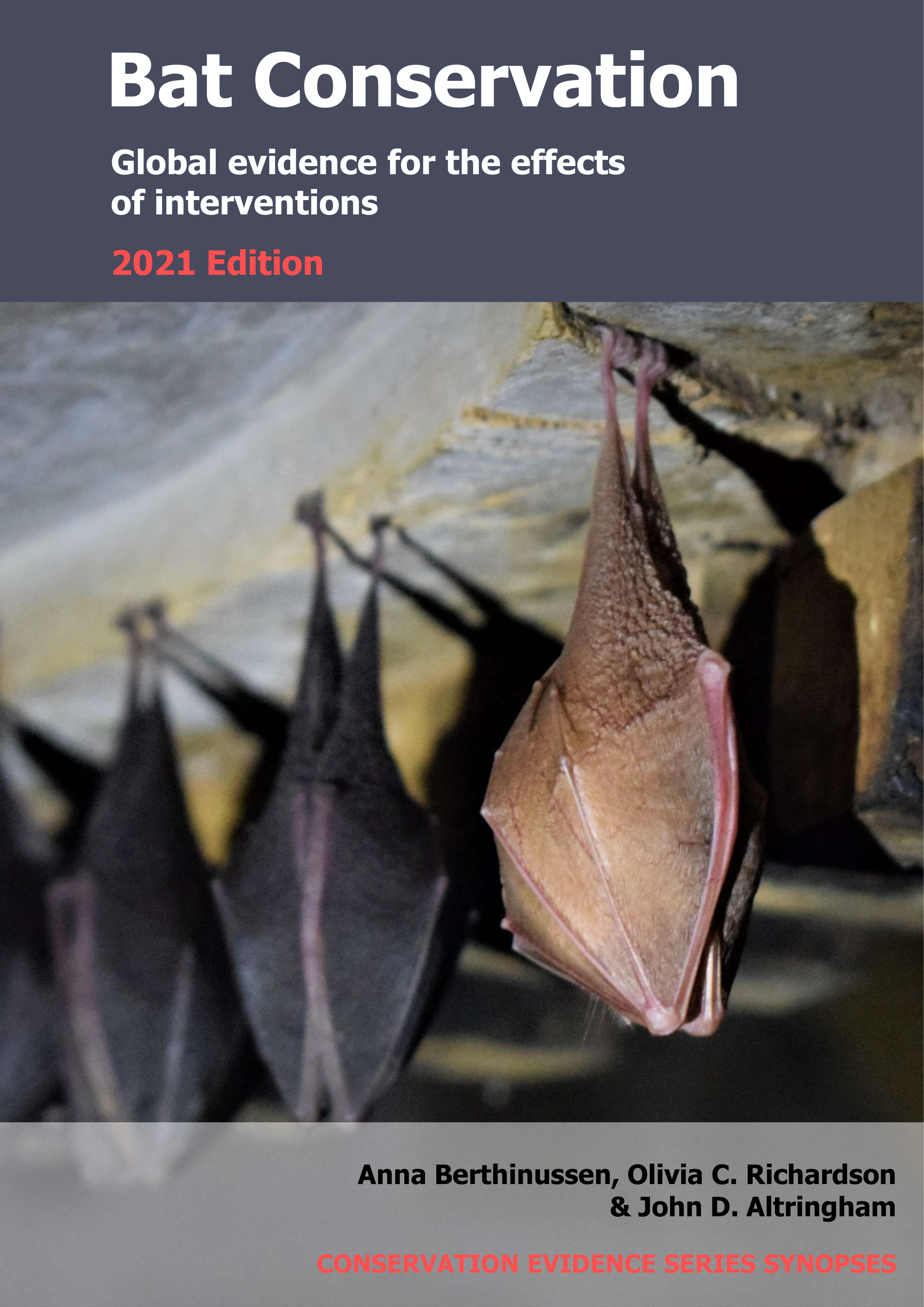Retain forested corridors in logged areas
-
Overall effectiveness category Likely to be beneficial
-
Number of studies: 3
View assessment score
Hide assessment score
How is the evidence assessed?
-
Effectiveness
55% -
Certainty
40% -
Harms
0%
Study locations
Supporting evidence from individual studies
A replicated, site comparison study in 2003–2006 of 27 radio-tracked Seminole bats Lasiurus seminolus in loblolly pine Pinus taeda plantations in South Carolina, USA (Hein et al 2008) found that forested corridors had more Seminole bat roosts than logged mid-rotation tree stands or mature forest. More male and female Seminole bat roosts were in forested corridors (male bats: 25 roosts, 61%; female bats: 31 roosts, 63%) than in logged mid-rotation stands (male bats: 14 roosts, 34%; female bats: 14 roosts, 29%) or mature forest (male bats: 2 roosts, 5%; female bats: 4 roosts, 8%). Distance to the nearest forested corridor was also negatively related to roost site selection (data reported as statistical model results). The study area (41,365 ha) was intensively managed for pine production. Mid-rotation logged stands were 12–22 years old. Forested corridors (100–200 m wide) consisted of mature pine (>23 years old) and/or mixed hardwood (>50 years old). Bats were caught with mist nets at nine ponds in open habitat from May–August in 2003–2006. Twenty-seven adult Seminole bats (10 males, 17 females) were tracked to 90 day roosts in the canopy of live pine trees.
Study and other actions testedA replicated, site comparison study in 2003–2006 of 53 radio-tracked evening bats Nycticeius humeralis in loblolly pine Pinus taeda plantations in South Carolina, USA (Hein et al 2009) found that forested corridors had more male but fewer female evening bat roosts than logged mid-rotation tree stands. More male but fewer female evening bat roosts were in forested corridors (male: 12 roosts, 39%; female: eight roosts, 18%) than in logged mid-rotation stands (male: six roosts, 19%; female: nine roosts, 21%). The greatest number of roosts were in mature forest (male: 13 roosts, 42%; female: 27 roosts, 61%). Distance to the nearest forested corridor was negatively related to roost site selection in male bats but not females (data reported as statistical model results). The study area (41,365 ha) was intensively managed for pine production. Mid-rotation logged stands were 12–22 years old. Forested corridors (100–200 m wide) consisted of mature pine (>23 years old) and/or mixed hardwood (>50 years old). Bats were caught with mist nets at nine ponds in open habitat from May–August in 2003–2006. Fifty-three adult evening bats (26 males, 27 females) were tracked to 75 day roosts in trees.
Study and other actions testedA replicated, paired sites study in 2004–2005 in 32 pairs of forested corridors and logged loblolly pine Pinus taeda stands in South Carolina, USA (Hein et al 2009) found that forested corridor edges had higher overall bat activity than corridor interiors or adjacent logged tree stands. Higher bat activity was recorded along forested corridor edges (54 bat passes/detector/night) than in corridor interiors (7 bat passes/detector/night) or in adjacent logged stands (12 bat passes/detector/night). Six bat species were recorded in total (see original paper for data for individual species). The study area (41,365 ha) was intensively managed for pine production. Thirty-two forested corridors (100–200 m wide) were paired with adjacent logged stands of a similar age. At each of 32 pairs of sites, bat activity was simultaneously recorded with five bat detectors (one on each corridor edge, one in the corridor interior, and two in adjacent logged stands) from two full consecutive nights in June–August 2004 or 2005.
Study and other actions tested
Where has this evidence come from?
List of journals searched by synopsis
All the journals searched for all synopses
This Action forms part of the Action Synopsis:
Bat Conservation
Bat Conservation - Published 2021
Update 2020





)_2023.JPG)














